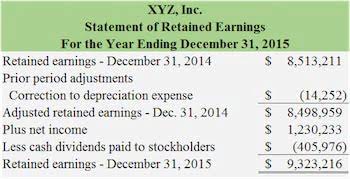
A majority of accounting in all these regards is done in double-entry systems. However, the possibility of introducing a new dimension and making it a Triple Entry Accounting system was discussed in detail in the two-day conference. These tools enhance accuracy and efficiency in managing a business’s financials. If you want your business to be taken seriously—by investors, banks, potential buyers—you should be using double-entry. Our team is ready to learn about your business and guide you to the right solution. Double-entry accounting has been in use for hundreds, if not thousands, of years; it was first documented in a book by Luca Pacioli in Italy in 1494.

Single Entry Accounting vs Double Entry Accounting System
Nowadays, the double-entry system of accounting is used all over the world. This is because it is the only reliable system for recording business transactions. The financial statements provide valuable information for stakeholders—including investors, creditors, management, and analysts—to assess the financial health and performance of a business. The first accounts of the double entry bookkeeping system was documented in 1494 by Luca Pacioli, a Franciscan monk and hailed as the Father of Modern Accounting. Revenue refers to the income that a business generates from its operations. It can come from the sale of goods or services, as well as from other sources such as investments or interest on savings.

Great! The Financial Professional Will Get Back To You Soon.
It’s essential to ensure a smooth transfer of financial data and to train staff on the new accounting method. See our roundup of the best small business accounting software to find a platform that can help automate your company’s double-entry accounting. These financial statements are interconnected, and information from one statement often impacts another.
Types of Business Accounts

Hence, the double-entry system of accounting suggests that every debit double entry accounting meaning should have a corresponding credit. If a company sells a product, its revenue and cash increase by an equal amount. When a company borrows funds from a creditor, the cash balance increases and the balance of the company’s debt increases by the same amount.
How do debits and credits work?

Double-entry accounting systems can be Accounting for Churches used to create financial statements (such as balance sheets and income statements), which can give insights into a company’s overall performance and health. For comparison, a single-entry accounting system merely tracks items of income and expense without any regard to what bank account income was deposited or how expenses were paid. For instance, a single-entry accounting system doesn’t keep track of the balance in a business’ checking account. A double-entry accounting system tracks the checking account, which guarantees all activity in the account is recorded. Double-entry accounting is a foundational practice, which allows for the tracking of both net income and balance sheet. It also fosters transparency, aids in error detection, and forms the basis for key financial statements like the income statement.
- In a single-entry system, each transaction is recorded as a single entry, typically in a cash book or a spreadsheet.
- Luca Pacioli introduced the concept of double entry accounting somewhere between the 13th and 14th centuries through his book published in 1494.
- Now that we have talked about the double entry bookkeeping system, let’s move on to recording journal entries.
- An important note to consider here is that a valid set of financial statements can still be prepared even if the accounting system is incomplete.
- C) The system demands that debits and credits always balance mathematically.
- The basic double-entry accounting structure comes with accounting software packages for businesses.
In single-entry accounting, each transaction is recorded once, usually in a cash register or simple ledger, with no corresponding entries. In double entry bookkeeping, every financial transaction affects at least two accounts. For example, when a business sells a product, it records the revenue in a revenue account and the cost of goods sold in an expense account.
- There are three different types of accounts, Real, Personal, and Nominal Accounts.
- This system is similar to tracking your expenses using pen and paper or Excel.
- If you’re a freelancer or sole proprietor, you might already be using this system right now.
- If you use accounting software, use it to generate a balance sheet as often as you need to make sure your books are balanced and your company is on track to succeed.
- In this case, assets (+$10,000 in inventory) and liabilities (+$10,000) are both affected.
This is because double-entry accounting can generate a variety of crucial financial reports like a balance sheet and income statement. For example, an e-commerce company buys $1,000 worth of inventory on credit. Assets (the inventory account) increase by $1,000 and liabilities (accounts payable) increase by $1,000.
- Double Entry Accounting gives businesses a clear picture of their Financial Activities by noting the money coming in and going out for each transaction.
- The double-entry system creates a balance sheet made up of assets, liabilities, and equity.
- Under the double-entry system, both the debit and credit accounts will equal each other.
- Additionally, each transaction must be recorded in the correct accounts and with the correct amounts.
- The balance sheet, which is one of the primary financial statements, shows the total assets, liabilities, and equity of a company at a point in time.
How confident are you in your long term financial plan?
A given company can add accounts and tailor them to more specifically reflect the company’s operations, accounting, and reporting needs. Double-entry bookkeeping records every transaction in at least two accounts, creating a system of checks and balances. This dual-entry method makes it easier to detect discrepancies and ensures any unauthorized changes are more difficult to hide. Accurate debits and credits are central to double-entry bookkeeping, and it’s your bookkeeper’s job to ensure each transaction Certified Public Accountant keeps your accounts balanced and error-free. To account for the credit purchase, a credit entry of $250,000 will be made to accounts payable.
In that transaction, Mr. Briggs invested $30,000 to start a marketing consultation business on October 1, 2021. Because of the two-fold or duality effect of transactions, the total effect on the left will always be equal to total the effect on the right. An important note to consider here is that a valid set of financial statements can still be prepared even if the accounting system is incomplete. But, it will require additional work to reconstruct the accounts to obtain complete information. If you’re wondering how on earth you keep track of all these accounts, the answer is a chart of accounts, which lists every account in your ledger. And if you’re not sure which accounts you even need, an accountant can steer you in the right direction.